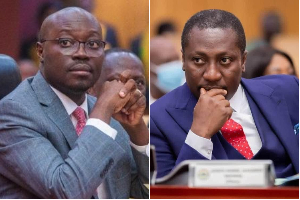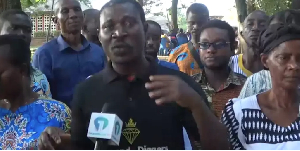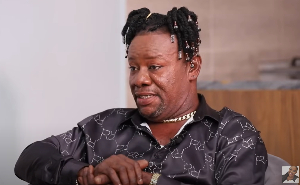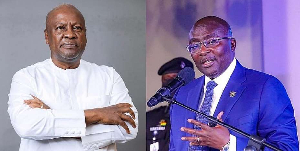More than 100 years ago, Lord Luggard said that "Africa 's problems can be summarized in terms of transport," and 100 years later, transport, especially urban transport, remains one of Africa's biggest problems.
The railway sector had not seen any major improvement since its creation by the colonial government in the early twentieth century until Nana Akufo Addo's government came to power in 2017. It was outdated and completely insufficient. The subsequently founded Ghana Railway Development Authority (GRDA) was under-resourced and incapable of fulfilling its mandate. Worse, funds planned for the construction of the railway network was diverted for the use of other government businesses.
Over recent decades, spatial trends suggest a movement towards a more diffused pattern of settlement, typically known as urban sprawl. National strategies have been set out to directly address sprawl in a variety of countries, but sprawl has become pervasive in most. The construction of new towns with sufficient rail links to major cities has been a critical instrument used to fight urban sprawl. In several nations around the world, this has also contributed to the concentrated growth of residential areas. Unfortunately, even in the face of all these benefits that urban dwellers could enjoy from an efficient urban and hinterland rail system, successive governments didn’t pay much attention to its development.
The Akufo-Addo government agreed in 2017 to disassociate the Ministry of Railways Development from the Ministry responsible for Transport, and this initiative was intended to attract the much-needed attention needed for the sector to be revamped. For larger cities facing periods of decline, railway projects provide opportunities. Railway-related concerns, whether the development of high-speed rail terminals, the construction of high-quality office areas near railway stations or the implementation of light rail systems, have become important topics in the policies established by the new Ministry of Railways Development. The Ghana Railway Development Authority (GRDA), owner of all railway facilities, developer and regulator of the sector, and Ghana Railway Company Ltd (GRCL), the operator of existing rail services, are the two agencies under the Ministry of Railways Development.
The construction of Ghana's railway infrastructure is now planned and available to investors under the Railway Master Plan (RMP) established by Team Engineering SPA in 2013. The RMP envisages the construction of 4008 km of railway lines over the next 33 years, beginning in 2015, at an estimated cost of approximately US$21.50 billion. The primary objective of the Authority is to develop the network in collaboration with the private sector under various financing models, including BOT and PPP arrangements, according to the RMP. The specifics of the development sequence and the modalities, including the key technical features, are provided in the RMP report. What is evident, however is the systematic move from the existing cape (Narrow), to the new standard gauge, for all newly built network lines.

The Railway Masterplan of Ghana
The current railway network consists of three routes: Western, Eastern and Central, running for approximately 940 km along with several branch lines. They are narrow (Cape) gauge, single track tracks, constructed during the colonial era and were used for both freight and passenger traffic. This railway network, along with the rolling stock, has degraded over the years due to a lack of maintenance and is currently in a state of disrepair and is unable to guarantee efficient and safe transport.
Since 2017, the current NPP government has given priority to the need to take account of the needs of northern Ghana, the bordering countries and the priorities of ECOWAS for the reconstruction, extension and growth of the entire national network, and to identify a roadmap for a new rail network.
With this as a basis, the following steps for the recovery and expansion of the network have been established as shown below:
Stage 1: Reconstruction of existing lines
Only two of the three existing lines have been rehabilitated: The Western Line (Takoradi-Awaso-Kumasi) and the Eastern Line (Accra-Tema-Kumasi), spanning approximately 668 km in total, including the Awaso and Prestea branches. The Central Line is not very attractive to freight and passenger traffic, which should be replaced by the proposed Coastal Line in successive phases.
The lines will remain narrow-gauge but will be upgraded and adapted to the current technical specifications for all infrastructure, while the sleepers will be conditioned for the eventual conversion of the lines to the standard gauge.
Traffic allocations mean that the Western Line has a higher capacity for freight transport and in particular, for mining, while the Eastern Line is more suitable for passenger transport.
On the basis of the surveys and verifications carried out it is proposed to carry out repairs to the small number of existing rolling stock fleets that it is still theoretically feasible to rehabilitate without the procurement of any new vehicles, thus preventing any additional costs in view of the potential transition to standard gauge tracks.
Stage 2: Central Corridor extension
The doubling of the track of the two rehabilitated lines in Phase 1 and the upgrade to the standard gauge of the previously modernized track, thereby creating two modern double-track lines on freight and passenger traffic routes with high demand.
Construction of a new single-track standard gauge line running from Kumasi to Tamale and Paga in the North. This procedure encompasses about 1161 km.
Step 3: Enlargement of the Transversal Connections
Construction of transverse links for the Tamale-Yendi, Fufulsu-Sawla, Techiman-Kwadwokurom and Nyinahin-Kumasi stretches, always with standard gauge single tracks, for a total of approximately 484km.
Step 4: Enlargement of the Trans-ECOWAS Line
This is mainly a coastal line that runs from Aflao (near the border with Togo) westwards to Tema-Accra-Cape Coast-Takoradi-Tarkwa-Omanpe for a total of approximately 498 km, with a standard single-track gauge.
5th stage: Enlargement of the Western Line
Initial Western Line to enter the future mines and connect them.
The line starts from Dunkwa- Awaso and stretches for a total of approximately 729 km towards Techiman, Sawla and Hamile
Step 6: Prolongation of the Eastern Line
This is a new route to the east of Ghana, near the border with Togo, which reaches the river port of Akosombo from Tema and stretches over Volta Lake to Mpakadan and then heads north to Ho and Yendi for a total of approximately 468km.
Based on the study of the current transport system and the Government of Ghana's proposed development plan for the expansion of existing railway infrastructures, a description of the 'Modern Railway Network' has been established in a future scenario. This scenario envisages the infrastructure and services needed to meet the rising demand for mobility in Ghana.
Rehabilitation and extension of existing lines will be carried out by the New Railway Network. The new railway network will be established in successive phases on the basis of the objectives defined for demand for traffic and reorganization. It is of strategic significance in the Ghanaian Railway Development Plans and follows essential steps for the reorganization of transport and the reclassification of the areas to be crossed: railway stations, provincial and urban railway services, transport routes for mineral products. On a supranational level, the new network constitutes a fundamental aspect of the Trans-ECOWAS Network, and also an important link to the northern, landlocked countries.
The Ghana Railways Development Authority has followed the blue-print on the Ghana Railway Masterplan devotedly since 2017. In effect, in the first phase, 668 km of the original narrow-gauge line will be rehabilitated and an additional 3340 km of new lines will be added to the network, and the first phase will be converted to standard gauge. With an investment of US$21.58 billion, a total of 4008km of lines will be completed in 33 years. This means that if this plan is pursued to the heart, the whole "food basket" of Ghana will be linked by rail by 2026 and this will dramatically reduce food prices in Ghana.
Government must promulgate a policy as a matter of urgency that will put all potential 1D1F factories on a railway line to assist in finished goods exports and raw materials imports.
The suburban service from Accra to Asoprochona was placed into service in 2007under President John Agyekum Kufuor’s government. The continuation of the line was introduced in 2009. A newly constructed cape gauge line distance was completed and commissioned in 2010. The total constructed track length is 10.1 kilometers, including platforms at stations in Tema and Asoprochona. Also commissioned were two Diesel multiple train units. Amandi Holding Limited carried out the project and was supervised by the Ghana Highway Authority and Ghana Railway Company Limited.
In 2011, the government decided to extend the railway line from Tema harbor to Tema Community 1. The project began in 2011 and was finished and commissioned in February 2012. The key features of the project include the semi-automatic barrier arm system at all four level crossings, two platforms at Halt at the fishing Harbour in the Community One Station. With an additional siding line at Community One Station, a track route length of 3.5 km was built.
For a smooth operation within the supply chain, transport interfaces are also very relevant. Therefore, the Ghana Railway Development Authority completed 5 railway stations and commissioned them.
Dr. Evans Ago Tetteh
Adjunct Lecturer
Regional Maritime University, Accra.
Opinions of Wednesday, 13 January 2021
Columnist: Dr. Evans Ago Tetteh



















